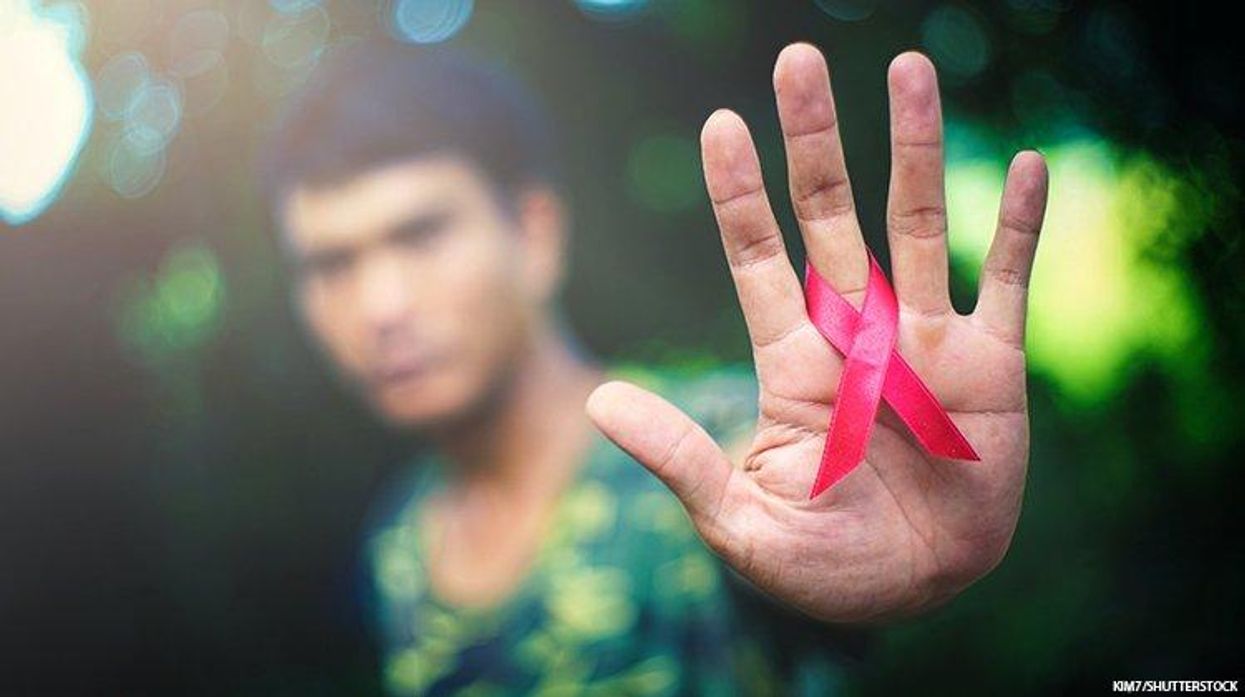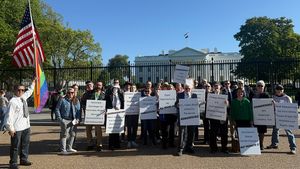On August 26, the Biden administration outlined its plan for fighting HIV infection and promoting access to life-saving preventative medications.
In a time when experts warn that social advancements in the fight against HIV are backsliding, the National HIV and AIDS Strategy Implementation Plan (NHAS) seeks to make the United States a place where new HIV infections are prevented, all people are aware of their HIV status, and all people with HIV receive high-quality care and treatment without stigma or discrimination.
The plan, which examines a whole government approach to addressing issues such as access and equity, prioritizes efforts to reduce disparities and improve HIV outcomes among LGBTQ+ people and other marginalized communities. Specifically, the government targets gay, bisexual, and other men who have sex with men, particularly Black, Latino, American Indian, and Alaska Native men.
This plan also targets Black women, transgender women, and young people between 13 and 24 years old. In addition, intravenous drug users are also targeted.
"Focusing efforts on these five priority populations will reduce the HIV-related disparities they experience, which is essential if the nation is to succeed on the path toward ending the HIV epidemic by 2030," the plan states.
The document warns that these actions are not exhaustive, as federal agencies will take various steps to support the NHAS over the next four years. However, administration officials believe these actions will best utilize resources, capacity, and expertise to achieve significant and immediate results for HIV-positive populations.
In an interview with The Advocate (a sister publication of Plus), Harold Phillips, director of the White House Office of National AIDS Policy (ONAP), explained that the administration will take 380 actions across 10 departments to implement strategies to reach the 2030 target. Education and outreach are among the actions, as are self-testing and PrEP access.
As an out gay Black man who has lived with HIV since 2005, Phillips was appointed to his role by President Biden last year. He has more than 20 years of experience in this field.
Across hundreds of speakers and presentations at the International AIDS Conference 2022 in Montreal, which took place the last weekend in July and the first week in August, one message was clear: the world is backsliding in its HIV fight.
People are less likely to access HIV testing, PrEP, antiretrovirals, and other breakthroughs due to stigma, a lack of information, and health care barriers.
As Phillips acknowledged, the conference sent a clear message to the international community, but the administration knew the extent of the decline in HIV-related services even before COVID-19 muted resource distribution.
"Last World AIDS day, President Biden released a new national HIV [and] AIDS strategy, which was a framework and a direction for the administration's policy, research, and planning through 2025, and as part of that plan, he called for us to accelerate our efforts," Phillips said.
When the first round of new funding for fighting the HIV epidemic was being distributed to communities, the COVID epidemic hit.
Phillips also acknowledged that the administration is keeping close tabs on the Texas lawsuit, Braidwood Management Inc., v. Becerra, that The Advocate discovered in July.
Attorney Jonathan Mitchell represents clients that, he argues, should not have to pay for preventative services, particularly medications for HIV pre-exposure prophylaxis, or PrEP. According to the lawsuit, their religious beliefs are violated when they have to pay for insurance that includes coverage for PrEP, which "encourages homosexual behavior" and drug use.
He added that this lawsuit covers much more than PrEP and HIV medications, and the administration is paying close attention.
"We are hoping for a good outcome," Phillips said, "but we are also standing ready to continue the president's work and pledge to do whatever we can to pull the levers of government to improve the health and well-being of all Americans, and that includes access to preventative services such as PrEP."
Dr. Patrick Sullivan is a public health researcher at Emory University in Atlanta. His team recently launched AIDSVu, a first-ever publicly available PrEP use data repository with maps of demographic and state-level breakdowns.
"We need to be speaking out against any kind of steps that would restrict access to medications for PrEP," Sullivan said. "When we contract the opportunities for PrEP when we make it harder for people to find these services, the groups that are going to be negatively impacted first are those with more challenges to transportation, more challenges to payment mechanisms, and less access to health insurance."
"What our data really show is that some of the barriers aren't being experienced equally by different groups," Sullivan said.
"Ideally, we'd like for PrEP to benefit the communities that have the most risk for HIV. That might mean areas in the South, where I live, but also Black people, Hispanic people, and younger people who have substantial risk."
He says in 2021, 14 percent of PrEP users nationally were Black, but 42 percent of new HIV infections were among Black people.
"If four in 10 new diagnoses are in Black people, then we'd like to see four in 10 Black people who are taking PrEP," Sullivan explained. "We have that gap, and it exists for Black people, Hispanic people, women relative to men. And this is an issue of equity that just kind of speaks to those barriers differentially impacting folks' access."
COVID disrupted HIV testing and clinical prevention and care in the United States throughout 2020, 2021, and even 2022 in some regions.
As society navigates the COVID pandemic, the plan emphasizes HIV prevention, care, and treatment for affected populations and communities.
Keeping the 2030 target in mind, the administration outlines a set of progress indicators it hopes to achieve by 2025. Among the eight measured targets are increasing HIV status knowledge from 85 percent to 95 percent and PrEP coverage to 50 percent from the shockingly low baseline of 13 percent in 2017.
Additionally, the plan includes five indicators to enhance the quality of life of HIV-positive people, including increasing the number of people with HIV who report good or better health and decreasing the number of people living with HIV with unmet mental health professional needs, hunger, unemployment, and homelessness.
"Building on lessons learned and progress made during the past decades, the United States now has the opportunity to end the HIV epidemic. The federal actions detailed in this Implementation Plan outline how we get there," the report boasts.


















































